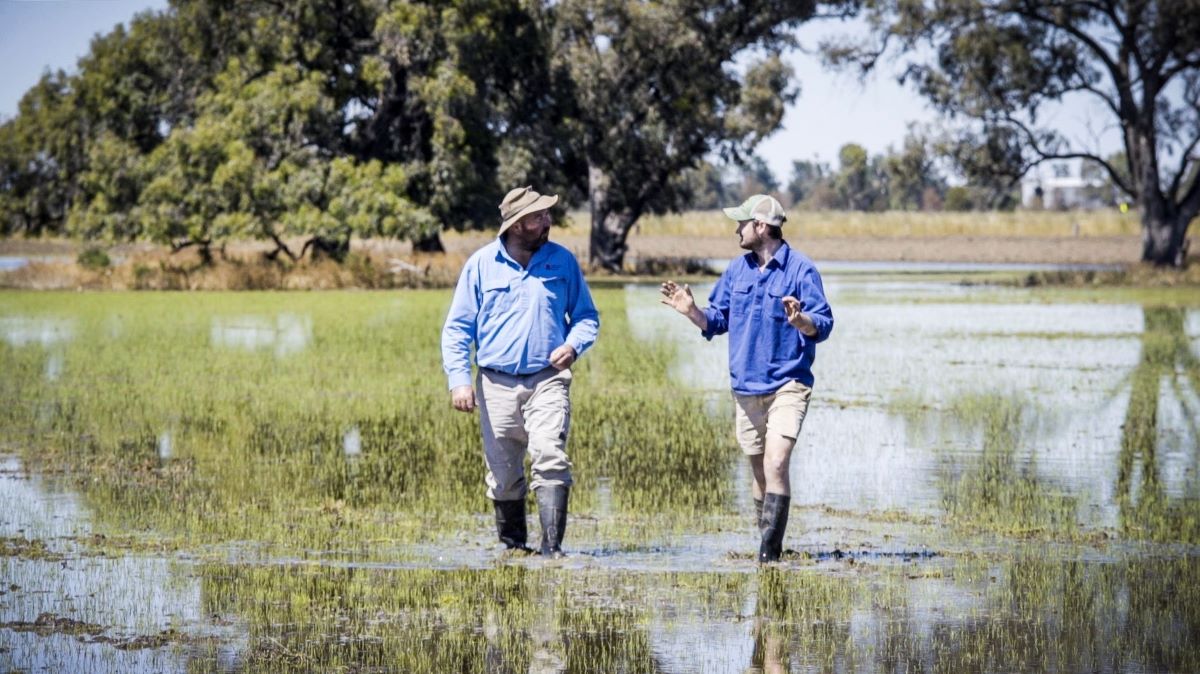Shallow water is best for rice
 PRODUCTION ADVICE - DECEMBER 2020 - AGRONOMY
PRODUCTION ADVICE - DECEMBER 2020 - AGRONOMY
By John Fowler
Extension Agronomist
Ph: 03 5881 9933 | M: 0427 079 138 | E: john.fowler@lls.nsw.gov.au
 Cold weather damage is probably the main threat to production Murray Valley rice growers face. All rice varieties grown in the Murray Valley are prone to cold weather damage, especially Reiziq. It can’t be prevented, but its severity can be substantially reduced if the crop is well managed.
Cold weather damage is probably the main threat to production Murray Valley rice growers face. All rice varieties grown in the Murray Valley are prone to cold weather damage, especially Reiziq. It can’t be prevented, but its severity can be substantially reduced if the crop is well managed.
Nitrogen and water management, along with sowing time, are the main tools for minimising the damage caused by cold nights at the young microspore growth stage. The main nitrogen decision has already been made, so water management remains the key to minimising cold damage. Most growers are aware of the importance of deep-water during microspore, but not all give equal importance to maintaining shallow water during the vegetative growth stages.
The aim of deep water at young microspore is to submerge the developing panicle below the water line. This is only possible if the panicle is not too high above ground level. Deep water during the vegetative growth stages (i.e. from sowing until panicle initiation) will cause the plant to grow taller and the panicle will be too high to fully cover with deep water.
Shallow water is required right up to panicle initiation. Best practice is to have water depth pegs in each bay and keep water depth to less than 5 cm on the high side of the bay. Basically, run water as shallow as you can practically manage.
Prioritising shallow water means any excess water caused by rain needs to be quickly removed from the crop. Growers are often reluctant to do this due to the high value of water. However, the cost of losing the water (if it can’t be recycled) is far less than the value of lost production if cold weather impacts can’t be moderated.
Keeping shallow water on the bay may mean that one or two high spots remain exposed. Again, the lost production from several small high spots is far less than what can occur if the entire bay does not have effective cold protection at microspore.
Deep water is not needed at panicle initiation, but it is essential at young microspore, which occurs about two to three weeks later. Delay applying deep water as long as practical. However, it must be on by the time the crop approaches microspore.
Paying attention to water management for the entire growing period, and not just the early reproductive stage, will reduce the impact of cold weather damage on crops.